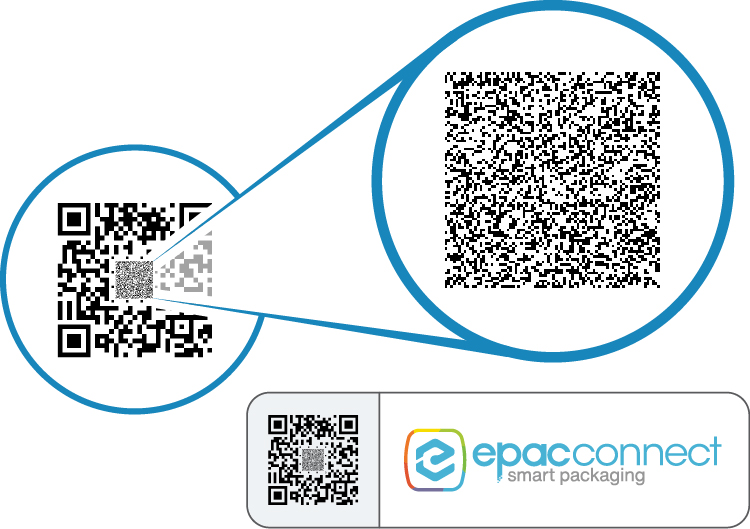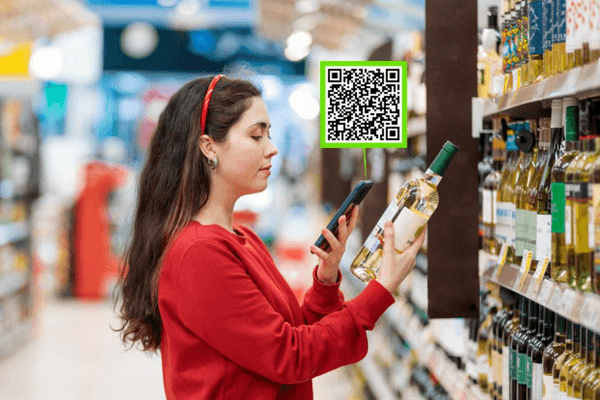One of the most impactful things we’ve discovered about bridging the gap between our phones and what ePac does is through ePacConnect. What our phones are capable of is endless, and because of their sheer firepower, using them to access different communication possibilities through packaging is a game changer.
So, What is Interactive Packaging?
Have you ever scanned something with your phone? That’s interactive technology at its core. The consumer is building a brand relationship and doesn’t even know it because they see the product not on a store shelf but by how it wishes to be experienced via something like a QR code.
A QR code (Quick Response code) is that box we saw pop up everywhere during the pandemic. Overnight, an emerging technology that had been around since the 90s shot off like a rocket in large part thanks to Apple giving the iPhone the technology to scan QR codes with the phone’s camera. And because everyone’s got a phone, the technology sold itself. QR codes were how we ordered a plate of pasta or paid the bill at the dentist. Intelligent brands have used that same digital imagination to push their company’s particular narrative.
The QR code is so effective due to its immediacy and ability to connect consumers creatively, which goes a long way toward creating memorable brand experiences via digital communication. Still, most importantly, it’s done through the brand’s lens.
But it’s not always about marketing; scanning the code can dive into how to use a product or what ingredients were used to make your favourite granola. There’s only so much room to squish information on a package, and the QR code allows an endless swath of real estate to inform consumers on anything. (We’ve got some fantastic examples of working with clients like Mr. Beast.)
One of the next frontiers in interactive packaging is augmented reality. Augmented Reality (AR) is a semi-virtual experience created within the real-world environment. The product experience is pumped up by going into the proverbial looking glass using 2D or 3D digital assets. AR creates an immersive experience that, like, QR, the consumer scans the product with an app and can be made discoverable. 19 Crimes wine has excelled with this by getting its base to download the app and scan the bottles, which keeps engagement high and allows brands to get data that paints an accurate picture of what the base wants.
What Does a Brand Get Out of the Interactive Packaging Experience?
You can invest as much or as little as needed when creating your online world. What you build is up to you from the packaging or label. You’re in control of what messages you want to send, but this also allows for product education and the opportunity to get exclusive offers, which cuts out the middleman.
There’s also been rumors of Apple working on new ways to use RFID technology for our packaging to talk to our phones, alert us when something is low, or make special offers. The future is here, and we’re only at the beginning of what interactive packaging can do.
Think about brands you love. If you’re a Nike person, you’re not wearing Adidas. If you’re a Macbook user, you’re not considering buying an HP machine. Consumers tend to identify with a brand and make it a part of their identity, and a QR code or AR is an excellent way to drive brand loyalty.
If you’re interested in learning more about some of the past brands ePac has worked with, we’d love to show you some samples.


